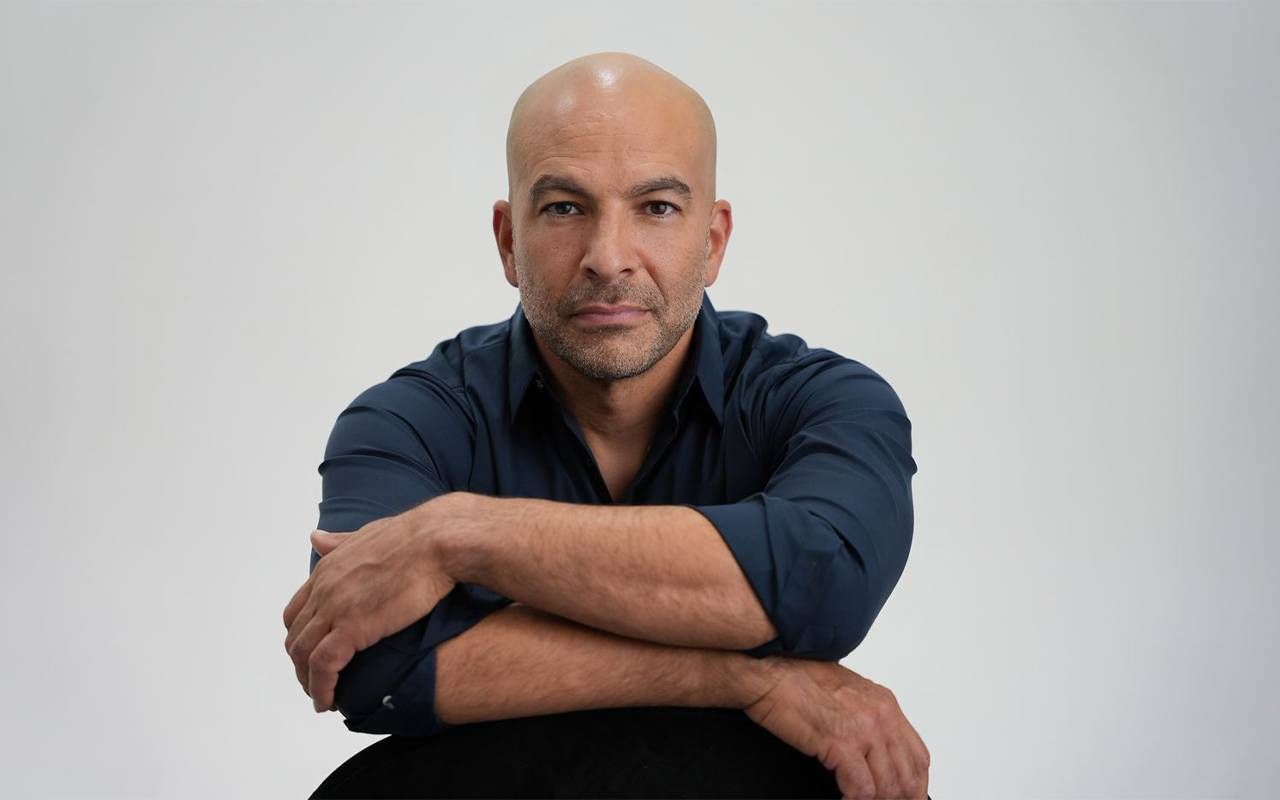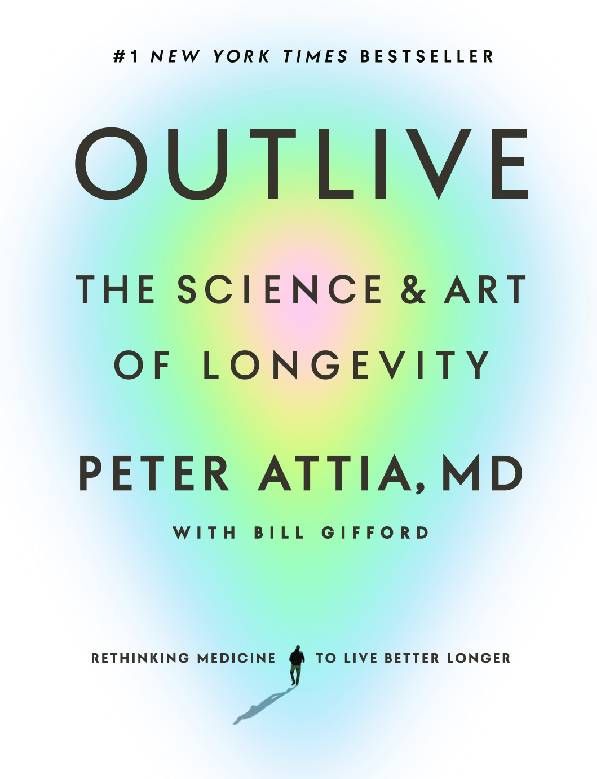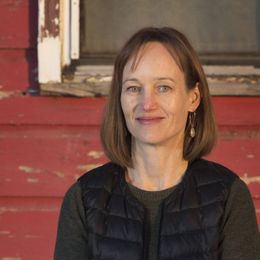A Trailblazer's View on Longevity
In 'Outlive,' author Peter Attia suggests a training plan for optimal health and longevity
There's no shortage of books on aging, health and longevity. But last spring, one of these books appeared on the New York Times bestseller list and has remained there since, garnering a lot of attention.

Outlive: The Science & Art of Longevity, by Peter Attia, MD, doesn't provide smoothie recipes or lists of superfoods. The book explores familiar topics like sleep, nutrition and mental health, where most readers can find room for improvement to optimize overall health.
"No other intervention does nearly as much to prolong our lifespan and preserve our cognitive and physical function."
But it stands apart in Attia's approach to exercising for longevity, which he believes is the most powerful lever we can pull to create the future many of us want for ourselves. "Exercise is by far the most potent longevity 'drug.'" Attia writes in "Outlive."
"No other intervention does nearly as much to prolong our lifespan and preserve our cognitive and physical function. But most people don't do nearly enough — and exercising the wrong way can do as much harm as good."
Attia is a practicing physician and hosts a popular podcast called The Drive, which covers health and medicine-related topics. His aim is similar to many longevity-focused health practitioners in wanting to help others increase their lifespan and health span, or the number of years without disease or physical challenges affecting their quality of life.
But his methods are designed for anyone wanting to exercise some control over how they age. His book introduces two novel concepts to motivate readers to think about their last chapter of life and the connection between present-day habits and the 80- or 90-year-olds we aspire to be.
Why Everyone Should Envision Their 'Marginal Decade'
The last ten years of our lives are what Attia refers to as "the Marginal Decade," and he asks readers to think about what they would like to be able to do during that time.
Most people die slowly, over years and even decades, from one of the chronic diseases of aging that he calls The Four Horsemen: cancer, heart disease, neurodegenerative disease, Type II diabetes and related metabolic dysfunction.
"Exercise is by far the most potent longevity drug."
"For many people the last ten years of life are not a particularly happy time," Attia says in the book. "They typically suffer from one or more of the Horsemen diseases and the effects of the requisite treatments. Their cognitive and physical abilities may be weakening or gone."
"Generally, they are unable to participate in the activities they once loved, whether that means gardening, playing chess, riding a bicycle, or whatever else in their life gave them joy. I call this the Marginal Decade, and for many, if not most, it is a period of diminishment and limitation."
If that sounds downright depressing, Attia is equally encouraging that we have more ability to shape our Marginal Decades — and avoid a grim and lengthy decline — than we might think. Genetics certainly play a role in the individual hurdles we all face as we age.
Still, a recent synthesis of studies in MedlinePlus aligns with Attia's assertion that how we live affects later decades, stating, "Scientists speculate that for the first seven or eight decades, lifestyle is a stronger determinant of health and life span than genetics."
And even after that, genetics are not as solely deterministic as we might suppose because "It is estimated that about 25% of the variation in human life span is determined by genetics."
For Attia, an optimal lifestyle involves maintaining a healthy diet, getting enough sleep and controlling stress, but more importantly, addressing all areas of fitness now to make the Marginal Decades we want more likely. And that means assessing your current cardiovascular or aerobic capacity, strength and mobility.
This assessment can be done in various ways, but working with a fitness coach or trainer or even using an online tool for self-assessment can provide objective information to establish a baseline.
What is the Centenarian Decathlon? (And Why You Should Create Your Own)
"The Centenarian Decathlon is a framework I use to organize my patients' physical aspirations for the later decades of their lives, especially their Marginal Decade," Attia explains in "Outlive."
"I know, it's a somewhat morbid topic, thinking about our own physical decline. But not thinking about it won't make it any less inevitable. Think of the Centenarian Decathlon as the ten most important physical tasks you will want to be able to do for the rest of your life. Some of the items on the list resemble actual athletic events, while some are closer to activities of daily living, and still others might reflect your own personal interests."

"I find it useful because it helps us visualize, with great precision, exactly what kind of fitness we need to build and maintain as we get older. It creates a template for our training."
Attia is in his early 50s, and his list includes things like being able to pick up a 30-pound grandchild from a squat position, lifting a 30-pound suitcase overhead on an airplane, getting off the floor with a single point of support and things that reflect personal interests, like shooting a bow and arrow.
Once you've done your assessment and made your Centenarian Decathlon list, compare your current fitness to the physical demands of what you want to be able to do during your Marginal Decade.
From there, break down those movements into physical tasks that approximate those goals — preferably with a trainer — and create a progressive training plan given the approximate number of years you have to work with.
But the math isn't as straightforward as doing, for example, weighted 30-pound squats now to ensure you can do them at age 85. Because natural age-related declines happen whether we are active or not, Attia says it's important to realize that we may have to work harder to compensate for those losses and shoot beyond that level now, banking some extra muscle and aerobic fitness for the future.
Nick Valera is a strength and conditioning coach who worked with college athletes for years before working as a trainer at a senior living community in Bozeman, Montana. He concurs with Attia's philosophy and adds, "I find that peoples' own health and physical well-being is too often forgotten about, whatever their age."
"I think it's important that everyone sets personal physical challenges regularly in order to keep themselves motivated."
"The older our bodies get, the faster we seem to decline, so we need to fight that every day. I think it's important that everyone sets personal physical challenges regularly in order to keep themselves motivated. It's even better with a support team to keep you on track. Even though I am a coach for a living, I also need coaches and friends around me to help me meet my challenges."
If you find yourself thinking, first, we're told to exercise; now we're told it may not be enough. Please know that this author feels your pain. And you're not alone: According to a recent survey by the Centers for Disease Control and Prevention (CDC), about one-quarter of adults aged 18 and over met their physical activity guidelines for aerobic and muscle-strengthening activities.
But before you opt out with a resounding, "Why bother?" Attia says, "For those who are not habitual exercisers (yet), you're in luck: The benefits of exercise begin with any amount of activity north of zero — even brisk walking — and go up from there. Just as almost any diet represents a vast improvement over eating only fast food, almost any exercise is better than remaining sedentary."
None of us can be sure of the future, and envisioning our Marginal Decades can be scary. But Attia sums up the reasoning for his approach in a recent interview with the New York Times, saying, "It's all about controlling what I can control, which improves the odds that I will get the desired outcome."


